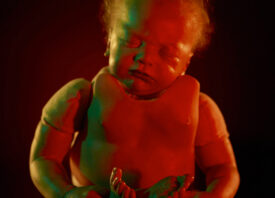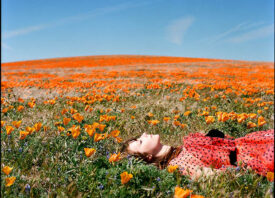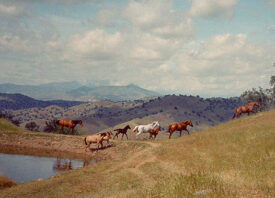Search this site
An alternative view of Japan from a celebrity portrait photographer


The photographs in Super Extra Natural! were taken in Japan over the course of 16 trips made between 2004 and 2016. Celebrity portrait photographer Emily Shur travelled the length and breadth of the country, and on each visit tried to visit somewhere new. The aesthetic and feel of the series developed organically with each new trip and shoot. She turns her lens to what she finds most interesting in the moment with no preconceived idea about what she will find in a given place.
“I hesitate to even call this a ‘project,’ Shur tells me, “I didn’t set out to shoot a specific subject matter, or tell a specific story. For the most part, my guiding theme is to just be myself.”
The title Super Extra Natural! is a nod to Japanese culture. Emily Shur admires the reverence that is traditionally paid to nature in the country. “The natural world is celebrated and plays such an important role in the day-to-day lives of the Japanese,” says the artist. “There’s an extraordinary sense of humility regarding nature.” The superlative and exclamation mark comes from the culture of kawaii, the Japanese word for cuteness—a national obsession you’ll encounter frequently when visiting or living in Japan.
Doors and windows are closed, cars and common objects are covered up. This is a world the photographer is not inhabiting—just passing through. As an outsider Shur is able to see the small details, pick out the complementary colours and find beauty in the mundane.
Leafing through the book, I couldn’t help but notice the absence of faces; strange for a photographer known best for her portraits of celebrities, among which are Helen Mirren are Will Ferrell.
The photographer elaborates: “I make a living as a portrait photographer so I’m definitely not averse to showing faces, but when I shoot for myself I do tend to gravitate towards images where people are seen more as compositional elements within the frame and not as the subjects. When there’s an opportunity for people or traces of humanity to add to the emotional content of a photograph, I’m all for it. I’m less interested in photographs that don’t say anything beyond showing what someone looks like. Also, I am very conscious of being polite when I photograph in Japan. Since I am an outsider, it’s important that I’m not intrusive with my camera.”
Also apparent in Shur’s photos is the striking use of complementary colors—principally reds and pinks beside varying shades of green.
“I’m definitely big on utilizing color as a means to convey emotion in a photograph,” she emphasises. “Certain colors or color combinations conjure up feelings for me. Different seasons also bring different color palettes with them that can really change the mood of a photograph. I find that the hard light of winter with its cool cyan shadows and bright golden sun makes for some of the most beautiful photographic colors, but to me, they’re also the most sad.”
















